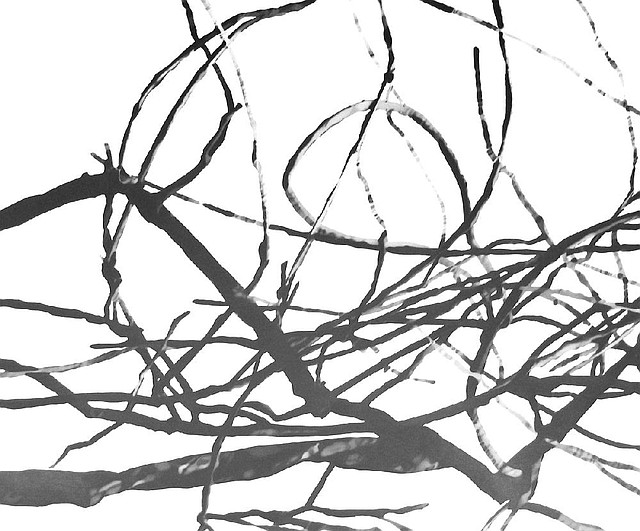Arkansan’s drawings, songs of Vaughan cerebral, lush
The title of Little Rock artist Jerry Phillips’ graphite on paper work is River Loop. It is part of his exhibit at the Butler Center for Arkansas Studies in Little Rock.
Sunday, July 7, 2013
An Arkansas artist and a legendary jazz singer share a certain point of view, a creative common ground.
Both are landscape artists.
When Jerry Phillips takes up graphite and paper, the Little Rock resident brings forth the landscape of our world and our selves refracted through a sometimes Zen-like simplicity paired with a Jungian-influenced vision of the psyche and consciousness.
The great vocalist Sarah Vaughan eloquently etched and illuminated the landscape of the heart with her remarkable voice. It is no wonder she was known as the Divine Sarah Vaughan, for she truly was, and is, one of America’s finest in any field of music.
A former New York resident, Phillips exhibits internationally; his works are in the collections of the Museum of Modern Art in New York and the Centre Pompidou in Paris. His exhibition “Get a Simple Landscape” is at the Butler Center for Arkansas Studies in downtown Little Rock.
In Phillips’ art, simple is not necessarily simple.
These graphite on paper creations are rich in detail, some of which emerges only when you take time to engage the work.
The artist’s statement in the middle area of the gallery explains the origins of the title, taken from a handwritten note inside a 1904 drawing book. The viewer can see the book for himself in a display case that also includes drawings, pictures and more. A computer tablet in another case shows Phillips creating art.
In this varying set of images, some are childlike in their simplicity. Others seem to burn into the viewer like a searing fever dream. River Loop, one of the show’s larger works, has the meandering, organic lines that suggest a river and tributaries, while clearly recalling entwined limbs of a tree or brush. Serene? Maybe.
Ur Crack is a crack in the wall or sidewalk that lets the light in so we can see fragments of concrete and dirt … or is it, in our hard-headed society, fragments of mind, of consciousness we’re viewing?
Untitled, from 2008, is a horizontal landscape that seems blurry like a hot summer haze. It could also be the fading memory of home or its recollection just coming into focus.
The startling My first big mistake was listening to the voices visually suggests a Rorschach test image that is possibly illustrating a chaotic unraveling.
Other images may seem tossed off or evoke an “anyone could do that” response. Really? Look closer. It’s not as simple as you might think.
“Get a Simple Landscape,” through Sept. 29, Mezzanine Gallery, Butler Center for Arkansas Studies, 401 President Clinton Ave., Little Rock. Hours: 9 a.m.-6 p.m. Monday-Saturday, 1-5 p.m. Sunday. Info: (501) 320-5700, www.butlercenter.org
When it comes to the human heart, things rarely are simple.
But Vaughan brought feeling and emotion to the front, essaying the range of emotion that is every love affair with a voice that possessed an operatic intensity, range and uncommon richness.
Her influence on other singers - Sade, Phoebe Snow and Rickie Lee Jones included - has reached well outside of jazz.
Vaughan, also nicknamed Sassy, was very prolific. She had a number of pop hits, including her best-known song, “Broken-Hearted Melody,” and she sang a version of the classic “Misty” that was finely filigreed and lustrous, fully romantic and imbued with yearning, surpassing the hit version by Johnny Mathis.
While many pop singers do their vocal gymnastics with a sort of “look at me, look at me” attitude, Vaughan’s vocal prowess is especially musical, as though her voice was a saxophone or a trumpet.
But it is her 1950s work with Mercury Records that is especially luminous. Divine: The Jazz Albums 1954-1958 (Mercury, four CDs, $79.99 list price) collects all of her jazz works from that period, including the albums Images and No Count Sarah (recorded with the Basie band without its leader) and two wonderful live recordings, Sarah Vaughan and Her Trio at Mister Kelly’s (with 12 songs not on the American release) and After Hours at the London House. This set of jazz and standards is essential listening.
Divine is a valuable addition to any music lover’s collection; the list price may be steep, but careful shopping can save a ten-spot or so. A few highlights:
When the song “Lover Man” is discussed, many naturally think of Billie Holiday. But Vaughan’s version is also a definitive recording of the classic song. That can also be easily said about hertake on “I Cried for You.” Vaughan is very playful and joyous on George and Ira Gershwin’s witty “They Can’t Take That Away From Me.” And her amazing scatting on “Shulie A Bop” is lively and invigorating.
Vaughan’s spin on Cole Porter’s “You’d Be So Nice to Come Home To” is without equal on the London House recording; Vernon Duke and E.Y. Harburg’s “April in Paris” is wonderfully sensual and sexy. The passion of the romantic Gershwins’ classic “Embraceable You” is abundant.
This boxed set is blessed with superlative musicianship, including vets such as Cannonball Adderley, Thad Jones, Frank Foster, Herbie Mann, Roy Haymes and many more. Divine also is a well designed and organized package with insightful liner notes by the Wall Street Journal’s Bill Friedwald (author of eight books, including A Biographical Guide to the Great Jazz and Pop Singers) and credits.
But the depth in her voice, musically and emotionally, made Vaughan a rarity among singers, one whom is rightfully upheld as one of the greatest of all time.
Simply divine.
E-mail: [email protected]
Style, Pages 45 on 07/07/2013
